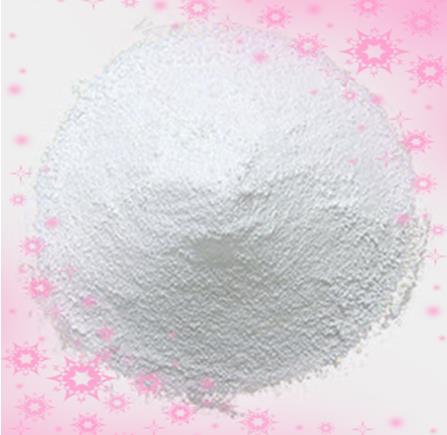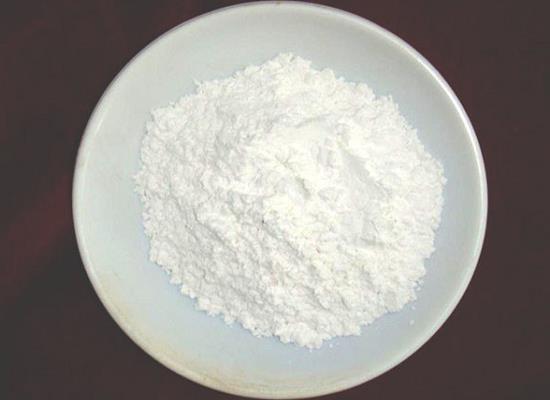Moxifloxacin Hydrochloride: A Comprehensive Overview
Aug 23,2024
Introduction
Moxifloxacin hydrochloride is a potent antibacterial agent belonging to the fluoroquinolone class of antibiotics. It has gained significant attention in the medical and chemical communities due to its broad-spectrum activity against various bacterial pathogens. This article aims to provide a detailed overview of Moxifloxacin hydrochloride, covering its chemical properties, main components, applications, and storage methods, catering to professionals in the chemical field.

Figure 1 Characteristics of Moxifloxacin hydrochloride
Chemical Properties
Moxifloxacin hydrochloride, with the chemical formula C21H24FN3O4•HCl, is a synthetic fluoroquinolone antibacterial agent. It is characterized by its molecular weight of 437.9 g/mol. The compound appears as a white to pale yellow crystalline powder, which is soluble in water and slightly soluble in ethanol. The hydrochloride salt form enhances its solubility, making it suitable for various pharmaceutical formulations.
Main Components
The primary active component of Moxifloxacin hydrochloride is Moxifloxacin, a fourth-generation fluoroquinolone. It features a bicyclic core structure with a fluorine atom at the C6 position, enhancing its antibacterial activity. The hydrochloride moiety is added to improve the solubility and stability of the compound, facilitating its use in oral and intravenous formulations.
Mechanism of Action
Moxifloxacin hydrochloride exerts its antibacterial effects by inhibiting bacterial DNA gyrase and topoisomerase IV. These enzymes are crucial for DNA replication, transcription, repair, and recombination. By interfering with these processes, Moxifloxacin hydrochloride prevents bacterial cell division and leads to cell death. Its broad-spectrum activity covers Gram-positive, Gram-negative, and atypical bacteria, making it a versatile antibiotic.
Applications
Moxifloxacin hydrochloride is primarily used in the treatment of various bacterial infections. It is available in both oral and intravenous formulations, allowing for flexible administration based on the severity and type of infection. Some common clinical applications include:
Respiratory Tract Infections: Moxifloxacin hydrochloride is highly effective against community-acquired pneumonia, acute bacterial sinusitis, and chronic bronchitis exacerbations. Its broad-spectrum activity ensures the eradication of common respiratory pathogens, including Streptococcus pneumoniae and Haemophilus influenzae.
Skin and Soft Tissue Infections: The drug is used to treat complicated skin and skin structure infections caused by susceptible bacteria. Its efficacy against methicillin-resistant Staphylococcus aureus (MRSA) makes it a valuable option in managing such infections.
Intra-abdominal Infections: Moxifloxacin hydrochloride is employed in the treatment of complicated intra-abdominal infections, including abscesses and peritonitis. Its activity against a wide range of anaerobic and aerobic bacteria is particularly beneficial in these cases.
Ophthalmic Infections: Moxifloxacin hydrochloride is available as eye drops for the treatment of bacterial conjunctivitis. Its broad-spectrum coverage ensures the elimination of common ocular pathogens, providing rapid relief from symptoms.
Other Indications: The drug is also used in treating urinary tract infections, pelvic inflammatory disease, and certain types of gastrointestinal infections. Its versatility and broad-spectrum activity make it a valuable asset in the antimicrobial arsenal.
Dosage and Administration
The dosage of Moxifloxacin hydrochloride varies depending on the type and severity of the infection. For most indications, the recommended dose is 400 mg once daily, administered orally or intravenously. The duration of treatment typically ranges from 5 to 14 days, based on clinical response and infection type. It is crucial to complete the full course of therapy to prevent the development of antibiotic resistance.
Safety and Adverse Effects
While Moxifloxacin hydrochloride is generally well-tolerated, it can cause certain side effects. Common adverse reactions include gastrointestinal disturbances such as nausea, diarrhea, and abdominal pain. Some patients may experience central nervous system effects like dizziness and headache. Rare but serious adverse effects include tendonitis and tendon rupture, QT prolongation, and hypersensitivity reactions. Healthcare providers need to weigh the benefits and risks before prescribing this medication.
Storage Methods
Proper storage of Moxifloxacin hydrochloride is essential to maintain its stability and efficacy. The drug should be stored at room temperature, away from direct sunlight and moisture. For the intravenous formulation, it is recommended to follow specific guidelines provided by the manufacturer regarding reconstitution and storage. Ensuring proper storage conditions helps preserve the drug's potency and prevents degradation.
![]() Reference
Reference
[1] Al Omari M M H, Jaafari D S, Al-Sou’od K A, et al. Moxifloxacin hydrochloride[J]. Profiles of drug substances, excipients and related methodology, 2014, 39: 299-431.
[2] Miller D. Review of moxifloxacin hydrochloride ophthalmic solution in the treatment of bacterial eye infections[J]. Clinical Ophthalmology, 2008, 2(1): 77-91.
- Related articles
- Related Qustion
Sodium triacetoxyborohydride enables precise amine synthesis via selective reduction of imines and can be detected by GC method using 3,4-dihydroisoquinoline.....
Nov 1,2024APISodium benzoate is commonly used in worldwide food. As a food additive, sodium benzoate has the E number E211.....
Aug 23,2024Food AdditivesMoxifloxacin hydrochloride
186826-86-8You may like
- What is the nitration process of Methyl benzoate?
Nov 2, 2024
- What are the Benefits of Tributyrin?
Nov 2, 2024
- What is Anisole used as?
Nov 2, 2024
Moxifloxacin hydrochloride manufacturers
- Moxifloxacin hydrochloride
-

- $0.00 / 1Kg/Bag
- 2024-11-02
- CAS:186826-86-8
- Min. Order: 1KG
- Purity: 98.0%~102.0%; EP9.0
- Supply Ability: 2500kg/month
- Moxifloxacin hydrochloride
-

- $0.00 / 1KG
- 2024-11-01
- CAS:186826-86-8
- Min. Order: 1KG
- Purity: 99% up, DMF
- Supply Ability: 20 tons
- Moxifloxacin Hydrochloride
-

- $0.00 / 1KG
- 2024-11-01
- CAS:186826-86-8
- Min. Order: 1KG
- Purity: USP, BP, EP
- Supply Ability: 5,000KG






